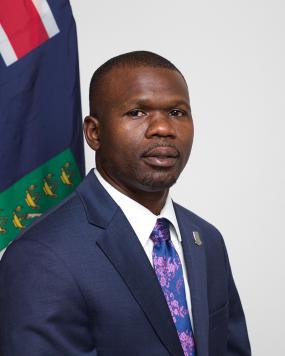Statement
STATEMENT BY MINISTER FOR TRANSPORTATION, WORKS AND UTILITIES
HONOURABLE KYE RYMER
DURING THE SEVENTH SITTING OF THE FIRST SESSION
OF THE FOURTH HOUSE OF ASSEMBLY
Thursday, 17th October, 2019
Traffic Transformation Strategy
 Mr. Speaker, with increased economic activity in the tourism and financial business sectors and young people turning 18 years of age, we continue to see more motor vehicles on the road ways. The further increases in economic activity that is anticipated as the diversification of the economy lifts off, will put further strain on our already limited and congested infrastructure.
Mr. Speaker, with increased economic activity in the tourism and financial business sectors and young people turning 18 years of age, we continue to see more motor vehicles on the road ways. The further increases in economic activity that is anticipated as the diversification of the economy lifts off, will put further strain on our already limited and congested infrastructure.
To deal with this challenge, we must find innovative, strategic methods to address traffic congestion while fostering a Pedestrian Friendly City in our capital.
With this said, I wish to advise this Honourable House that I am leading a comprehensive study on the traffic flows in the Road Town area with the inclusion of the Royal Virgin Islands Police Force/Traffic Unit, the Town and Country Planning Department, the Public Works Department, Dr. Drexel Glasgow, and the Ministry of Transportation, Works and Utilities. This study will aid us by taking the “guess-work” out of our traffic management and planning as we look towards the short-, medium- and long-term development programme.
Mr. Speaker, in all countries there are peak hours that promote the increased movement of traffic flows, create bottle necks and increase disruption to efficient traffic flows. Already, we have identified some issues that can be addressed for low- or no-cost, which will bring relief to the motoring public while the broader strategy is being put in place.
Some of the issues that we have identified to bring relief in the Road Town area are:
- the need to redirect the direction of traffic,
- the need to better outline the movement of vehicles in and out of parking lots, and notorious congestion spots, and
- reducing the need for motorists to drive within the central capital.
On the low- and no-cost side of things, one creative option being worked on by my team at the MTWU is the creation of a one-directional loop from Bobby’s Corner down DeCastro Street, through Nibbs Street and back up Waterfront Drive. This simple strategy will dramatically improve traffic flows in the immediate term.
Other plans for reducing vehicular congestion in the town area are:
- Formalized parking at the Festival Grounds and the area between the Waterfront Jetty and the Queen Elizabeth Park II with no parking charge. A shuttle service will also be offered that will loop around the capital.
- Parking in the central capital will attract a fee. Those funds will be contributed toward the upkeep of the Parking and Road Ways in Road Town.
Mr. Speaker, the MTWU has procured traffic counters and will be using those devices to survey the number of vehicles on the streets at given peak hours. That data will be populated onto software to develop models which will guide in the measures to be implemented.
I will be hosting another stakeholders/public meeting to demonstrate the changes proposed, the impact we expect the changes to have, and give timelines of when we will affect the transformation.
The changes that the Ministry of Transportation Work and Utilities are proposing fall within this Government’s mantra to “Create a Pedestrian Friendly City” and to lift the quality of life for our citizens, residents and visitors.
Mr. Speaker, I also wish to take this opportunity to advise that the traffic lights in Road Town Pasea have been returned to service, having been non-functional since Hurricanes Irma and Maria in 2017. The lights were switched back on last weekend and the concrete barriers at Pasea have been removed.
I want to urge motorists and other road users to be cautious when using the roads, particularly at these intersections. Adhere to the traffic lights, all the traffic lights within the Territory, Admin and Waterfront Drive, Station Ave, and Pasea. Utilise the signs. Adhere to the lights. Buckle up and be careful.
Mr. Speaker, I thank you.

